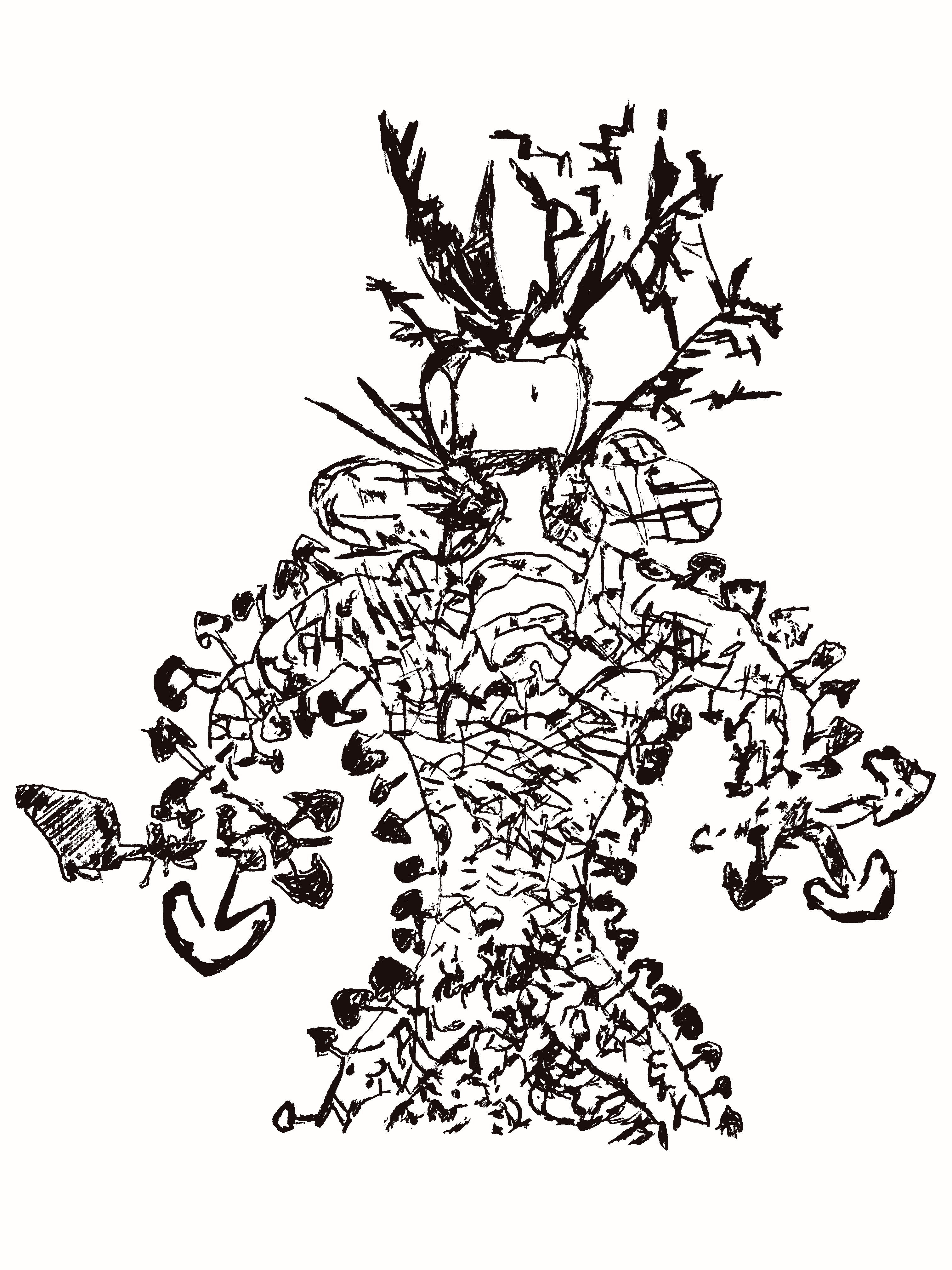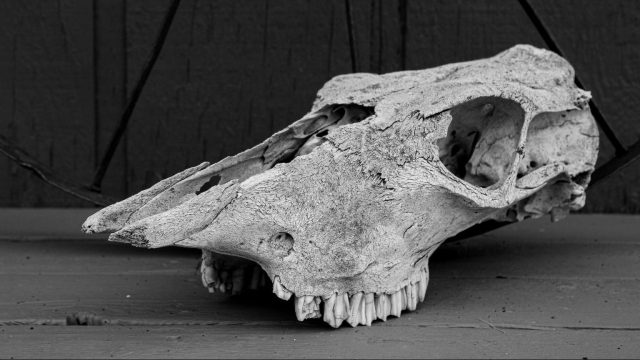The wild psychedelic origins of indigenous mystical rites — as revealed by archaeology

Credit: Louis van Houtte (1810-1876) / Public domain / Wikimedia Commons
- The nascent field of archaeochemistry has furthered our understanding of the psychedelics used by ancient indigenous populations.
- Evidence of ritual hallucinogens can be seen in ancient cave art as well as in residues in shrines and shell cups.
- Psychedelics appear to be inseparable from the universal religious heritage of humankind.
We’ll never know when and where humans first discovered the mind-altering power of psychedelics. But it seems fair to state three things about our relationship with visionary drugs: it’s incalculably old, globally pervasive, and rich with meaning. Our ancestors likely began their long journey with naturally occurring psychotropic substances tens or even hundreds of thousands of years ago.
The nascent field of archaeochemistry has convincingly demonstrated Neanderthal use of psychoactive plants like yarrow and chamomile going back 50,000 years. Anthropologist Scott M. Fitzpatrick envisions the early hunter-gatherers of our own species encountering, consuming and experimenting “with a wide array of plants” and fungi — just like their Neanderthal cousins.
A generation ago, Terence McKenna famously introduced the Stoned Ape Theory, proposing an evolutionary advantage for a diet of psilocybin-containing mushrooms across the African savannas — not merely hundreds of thousands, but millions of years in our hominin past, prompting the development of proto-language, creativity, and religious insight well before the Neanderthals. Only now are scholars, like paleoanthropologist Lee Berger in South Africa, seriously investigating the bold claim.
As humans spread across the planet, the psychedelic pharmacopeia (record of medicinal drugs) grew. “Few areas of the globe lack at least one hallucinogen of significance in the culture of the inhabitants,” says Plants of the Gods: Origins of Hallucinogenic Use. This classic study by Harvard ethnobotanist Richard Evans Schultes and LSD discoverer Albert Hofmann, originally published in 1979, is something of a bible for amateurs and professionals alike.
Its haunting photographs and illustrations escorted me to the very roots of Western civilization, and the surprising discovery of an Ancient Greek brew spiked with ergot (the very fungus Hofmann used to synthesize LSD in 1938). Along the way, I discovered how much solid evidence the archaeological sciences had turned up for an archaic, world-wide use of psychedelics beyond Europe and the Mediterranean — sacred traditions, perhaps from deep prehistory, some of which survive today.
However, the global hunt for evidence of ritual psychedelics down the ages can be filled with wishful thinking and blind alleys. Let’s briefly review some of the more reliable data.
Africa
Among the Neolithic rock shelters of the Tassili n’Ajjer National Park, a World Heritage Site in the dunes of the Algerian Sahara, curious frescoes have bedazzled researchers for over a century. One in particular (dated up to 8000 BC) has been interpreted as a bee-headed wizard-priest in psychedelic ecstasy, dozens of mushrooms magically sprouting from the body, with several larger specimens from the hands. The site’s discoverer believed the painted galleries were “secret sanctuaries” – placing Tassili n’Ajjer in the middle of a debate about the possible psychedelic origins of cave art.
Africa’s best-known psychedelic, Tabernanthe iboga, is a shrub that grows to about four feet (1.2 m). Its roots are rich in the alkaloid ibogaine, a compound with the potential to alleviate a number of neuropsychiatric conditions. Traditionally, the Bwiti cult of Gabon has consumed iboga to enter the realm of the dead as part of an intense, visionary initiation that can last for days. The legends of the Fang people locate the discovery of iboga to the primeval forest, centuries or even millennia in the unwritten past.

Ubulawu is a preparation of psychoactive plants and herbs including Silene undulata or “dream root.” Like iboga among the Bwiti, ubulawu has been used by the Bantu of southern Africa in rites of passage. There’s also Boophone disticha, a bulbous flowering plant whose alkaloids can produce profound hallucinations among diviners and herbalists in Zimbabwe and South Africa to “induce communion with ancestors.”
Several other possible hallucinogens have been identified in the ethnographic records, even if the archaeological data from sub-Saharan Africa is scant. One exception is the Lalibela Cave in central Ethiopia, where two stone pipe bowls tested positive for cannabis residue, with a very tentative date of the 13th or 14th century AD.
In Egypt, researcher Giorgio Samorini has cataloged archaeological evidence of psychedelics — including seeds of an unknown Hyoscyamus species from the Hidden Valley, northwest of the Farafra Oasis in the Western Desert (as old as 6000 BC); in addition to seeds of Acacia nilotica (a potential source of the powerful hallucinogen dimethyltryptamine, or DMT) and Peganum harmala (heavy in β-carbolines like harmine and harmaline) from the predynastic site of Maadi (as old as 3700 BC).
Paleobotanical remains of Nymphaea caerulea (the blue lotus or blue water-lily) can be dated up to 6000 BC. An incarnation of Osiris, this lotus was among Egypt’s most sacred plants, appearing in several chapters of the Book of the Dead, “always tied to magical-religious rites.” Lastly, mandrake (Mandragora officinarum) is a member of the nightshade family, containing such potent alkaloids as hyoscyamine, atropine, scopolamine, and mandragorine. Its image appears on mummy masks, coffins, and tomb wall paintings throughout Egypt’s “New Kingdom” period (1550-1069 BC).
Asia-Pacific
Promising research in Australia has focused on pituri, a fascinating mixture of leaves and wood ash containing at least one hallucinogen, Duboisia hopwoodii. Pituri was used by older men to enhance their role as seers, and would have impressed the aboriginal initiate “as a vehicle of communication with preternatural realms.” In Papua New Guinea, studies have identified a number of psychoactive flora, like Kaempferia galanga L., said to produce “pleasant dreams and visions.”
The Bronze Age petroglyphs of Pegtymel among the rocky cliffs of eastern Siberia are firmly dated (1500 BC) and carry a strong ethnographic record for mushroom consumption. Its “mysterious anthropomorphic figures” resemble dancing Amanita muscaria, that red-and-white capped fungus of fairy tales. Written reports of ancient Amanita ceremonies go back centuries and are widely documented among the indigenous people of the region. One report from 1897 cites the ritual ingestion of up to 21 Amanita, catapulting the shaman “into an exalted state” to receive information from deceased ancestors.
Amanita has been suggested as the secret ingredient in the Ancient Indian potion known as soma: the sacramental drink of the Rigveda, a collection of sacred hymns composed as early as 1700 BC. One particularly memorable line from the Rigveda reads: “We have drunk soma and become immortal; we have attained the light, the gods discovered.” Soma is referred to as the “elixir of life,” and is explicitlycharacterized as madira, the Sanskrit term translated by Harvard scholar Calvert Watkins as “hallucinogenic.” But no archaeobotanical / archaeochemical data has ever come to light to solve the enigma of soma.

The oldest data from the Asia-Pacific hails from Spirit Cave in Thailand, where seeds of betel nut (Areca catechu) have been dated to at least 7000 BC. In South Asia, a detailed botanical investigation of Kunal, an early Harappan site (3000-2500 BC), yielded seeds of datura, morning glory, black nightshade, and cannabis. Datura, another hallucinogenic plant in the nightshade family, has long been associated with Shiva worship (Shaivism), and was used in “rites of passage” and “diverse forms of shamanism.” Cannabis remains integral to the intoxicating beverage bhang, a staple of Shaivism to this day.
Recent archaeochemical work from China and Israel has confirmed the deep history of cannabis as a visionary drug. The Pen-ts’ao Ching — China’s oldest pharmacopeia — says cannabis “makes one communicate with spirits.” The most compelling data for ritual consumption of psychoactive compounds in China emerged in 2019, when several cannabinoids were detected in wooden braziers unearthed from the Jirzankal Cemetery in Central Asia (ca. 500 BC). And it was only in 2020 that organic residue analysis finally revealed the first psychoactive ritual in the Holy Land. Charred remains retrieved decades ago from the Judahite shrine at Tel Arad south of Jerusalem (a scaled-down version of Solomon’s Temple dated to the 8th century BC) showed several cannabinoids, as well as frankincense, suggesting a psychotropic incense potentiated by cannabis.
The Americas
In the New World, “the number and cultural significance of hallucinogenic plants are overwhelming, dominating every phase of life among the aboriginal peoples,” according to Plants of the Gods. In December 2020, the first unambiguous archaeochemical data finally emerged for the psychedelic origins of cave art. At the so-called Pinwheel Cave in southern California, scientists confirmed the ritual use of datura. For centuries, it allowed Chumash initiates “to see beyond surface appearances into the true nature of things” — into “the other world” beyond space and time. They were said to “establish contact with a supernatural guardian” or “communicate with the spirits of the dead.” As an homage to these experiences, the cave ceiling still bears the painted image of a datura flower, unfurling in red ochre.

The peyote cactus (Lophophora williamsii) has been ritually used by Native Americans for millennia. Mark Plotkin, a student of Schultes and host of the Plants of the Gods podcast, cites the testimony of a Huichol shaman: “The peyote sees your heart. If you have luck, you’ll hear things and receive things that are invisible to others, but that God has given you to pursue your path.” In 2005, two peyote “buttons” (the crown of the peyote cactus) recovered from Shumla Cave in southwest Texas were radiocarbon dated to 3780-3660 BC. Later analysis by gas chromatography-mass spectrometry detected the naturally occurring psychedelic compound mescaline in both samples.
Ayahuasca is probably the best-known psychedelic from South America. Like peyote, its pre-Columbian roots are now firmly established. In December 2022, 22 mummies from Cahuachi, the religious center in southern Peru sacred to the Nazca people, were analyzed. Their hair revealed some true firsts — not only the earliest known use of the mescaline-containing San Pedro cactus, but ayahuasca as well. Specifically, the researchers found alkaloids present in Banisteriopsis caapi, the woody climbing plant traditionally used as an ingredient in the ayahuasca brew. This “vine of the dead” was dated to 550-750 AD, demonstrating the use of “cultic plants” from the distant Amazon, where Banisteriopsis caapi grows natively.
The Cahuachi discovery follows the 2019 find from Cueva del Chileno in Bolivia, where organic residue analysis of a “1,000-year-old ritual bundle” revealed a slew of psychedelics: harmine, bufotenine, DMT, and possibly psilocin. The site was interpreted as the domain of “ritual specialists” who would cultivate “extraordinary states of consciousness.”
The “black drink” — not as widely known as peyote or ayahuasca — was traditionally thought to be a caffeinated tea made from yaupon holly (Ilex vomitoria). But another ingredient was lurking in the artifacts. In 2018, a number of shell cups and ritual vessels were sampled from various Mississippian sites in Arkansas and Oklahoma, each with a date of 1100-1700 AD. Chemical analysis confirmed the presence of atropine and scopolamine: alkaloids found in datura. One container bears the shape of an earth mother goddess, Old-Woman-Who-Never-Dies, who acted as a female guardian spirit in the Beneath World. It suggests the ritual use of datura “as a source of dreams through which women found and communicated with such spirits.”
Once again, the parallels to psychedelic ceremony worlds away in Africa and the Asia-Pacific cannot be ignored. Psychedelics are part and parcel of the universal religious heritage of humankind — East and West, North and South. They predate our species and, if we study the past as well as existing traditions, might redefine the way we understand ourselves, the planet and the cosmos.





